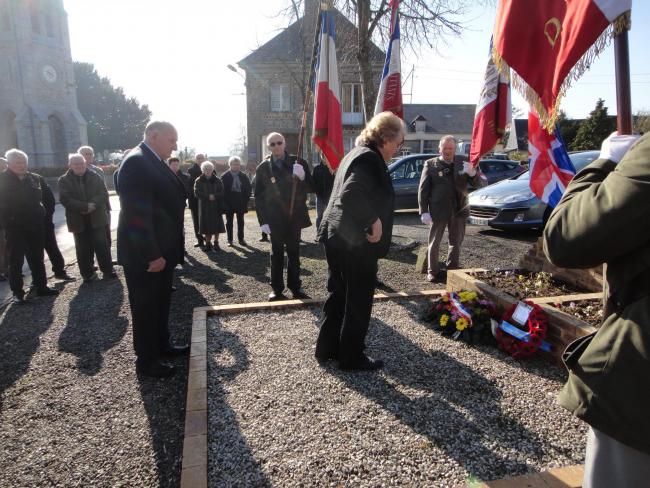Private George Hanks – a farmer from Wendlbury near Bicester in Oxfordshire, who volunteered with the 5th Battalion of the Oxfordshire and Buckshire Light Infantry – was killed in the aftermath of the Normandy invasion at Estry in Normandy on August 7, 1944.
Private Hanks’ grandson Paul Harris said: “My mother Rosemary was only a year old when her father fell on August 7, 1944. While she knew he was killed some 30 miles south of Caen at Estry, she didn’t know the events leading up to or surrounding the fateful night.
“She passed on my grandfather’s wartime letters to me. The letters asked how his little girl was, whether she was walking or talking. My mother has never been able to read them. I spent a year researching George’s movements in Normandy, documenting day-by-day where he was and what he went through.”
Through Harris’ research he found that Private Hanks volunteered in 1944 as a member of the 5th Battalion of the Oxfordshire and Buckshire Light Infantry before being transferred to the 10th Battalion of the Highland Light Infantry at the time of the Normandy landings. He fought in several WWII campaigns including Operations Epsom, Greenline and Bluecoat as the Allies fought to establish a foothold in Europe. He landed at Courselles in France just 11 days after D-Day but was called into action nine days later. He fought in two operations before the fateful night in Estry.
Harris got in touch with historians, a local tourism office and the village mayor. French villagers invited the family over. Mr. Harris said, “In a remarkable turn of events it was the first time since 1944 the family of one of the 450 men killed in the battle at Estry had been in touch, and the residents were so delighted that they made the heart-warming gesture of adopting my grandfather as their soldier with a wreath-laying ceremony held to honor the brave soldier.”
“The battle of Estry was some of the most gut-wrenching fighting of the campaign,” Harris continued. “The Germans were heavily dug in with machine guns, tanks and mortars. During the house-to-house fighting virtually the whole of the village was flattened and scorched. “On the night of August 6, Hitler himself had ordered what was to be the last counter-offensive and my grandfather was hit by mortar fire.”
Private Hanks’ daughter Rosemary, her husband Archie Harris, and grandson Paul Harris and his wife Simone attended the village ceremony on Friday, April 1st, alongside the mayor, local veterans and villagers. These included 84-year-old Albert Prunier who as a 12-year-old boy took care of Private Hanks’ temporary grave for two years after he was killed on their farm. Private Hanks was moved to nearby St Charles de Percy Commonwealth War Graves Cemetery, giving his daughter “great comfort and closure.”
